
Fundamentals
Cornrow Care, in its elemental sense, refers to the deliberate and thoughtful practices employed to maintain and preserve cornrows, a revered traditional African hairstyle where hair is braided very close to the scalp, creating raised, continuous rows. The name itself, often linked to the visual resemblance to rows of cultivated crops, holds echoes of agricultural rhythms and interconnectedness, particularly in the Americas and Caribbean where enslaved Africans were compelled to work in fields of corn and sugarcane. The core meaning of Cornrow Care lies in the attentive preservation of these intricate scalp braids, which are a cornerstone of textured hair traditions, shielding the hair from external pressures and minimizing daily manipulation.
This initial explanation, offered for those newly encountering this styling tradition, establishes that Cornrow Care extends beyond mere aesthetic considerations; it is a custodial practice, rooted in historical ingenuity and a deep understanding of textured hair’s intrinsic nature. The intention behind such care is primarily to foster a conducive environment for healthy hair growth and length retention, by providing a protective sheath for delicate strands.
Cornrow Care is the deliberate tending of intricately braided scalp designs, a practice deeply rooted in African heritage, designed to shield hair and promote its natural vitality.
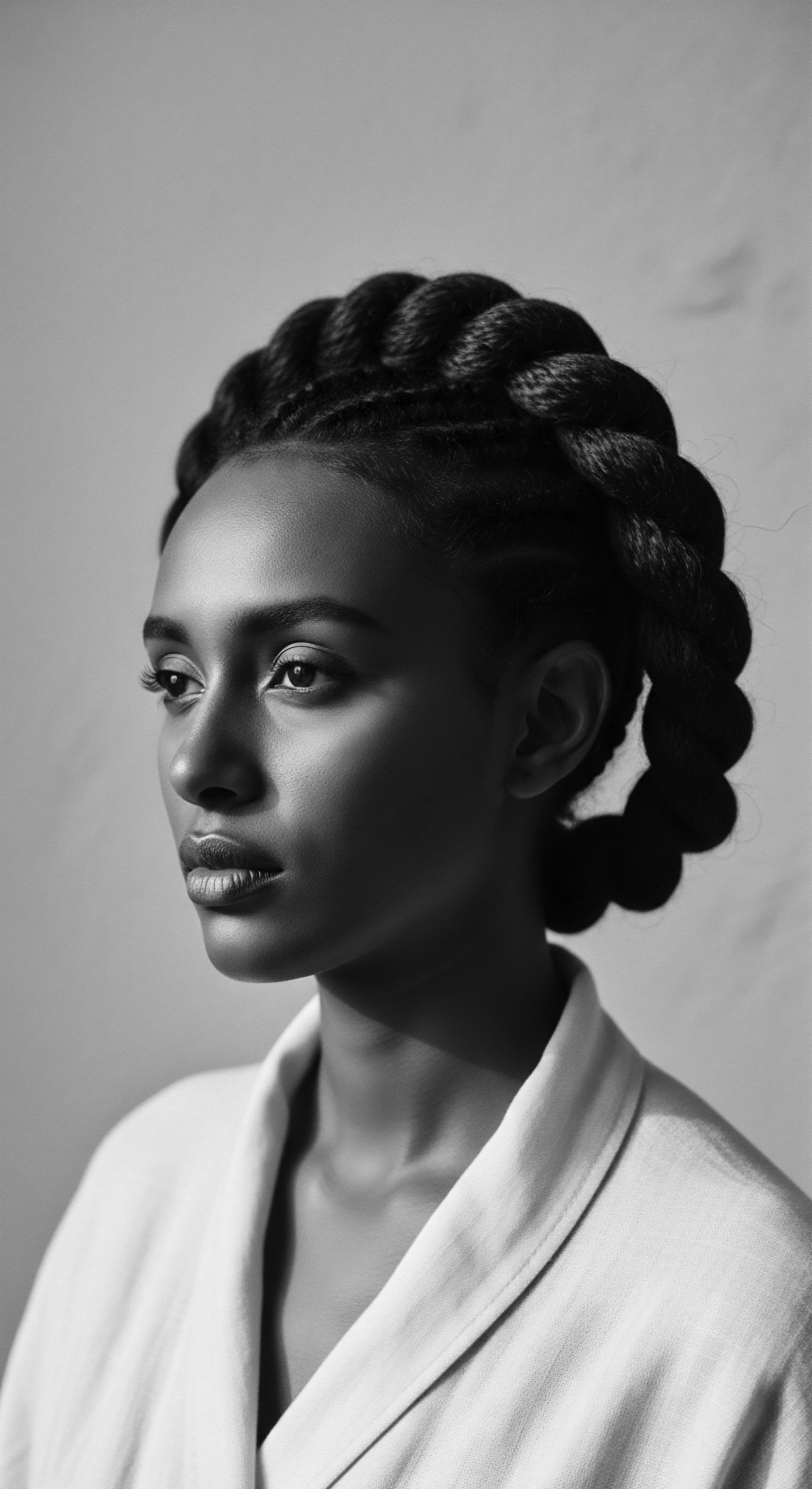
Understanding the Cornrow Structure
The physical manifestation of a cornrow involves a unique braiding technique where hair is divided into sections, and each section is braided underhand, attaching new hair as the braid progresses along the scalp. This creates a neat, raised ridge that lies flat against the head. Such a design, whether in simple straight lines or more elaborate curvilinear configurations, serves as a foundational element for a variety of styles. The braids keep the hair organized, minimizing tangles and reducing the need for constant combing or brushing, which can contribute to breakage for curly and coily hair types.
From a foundational standpoint, the care of cornrows addresses the immediate physical requirements of the style. This includes gentle cleansing, appropriate moisturizing of both the scalp and the braided hair, and protection from environmental stressors. These fundamental acts ensure the longevity of the style and the underlying health of the hair strands, allowing individuals to experience the comfort and practical benefits these styles offer for weeks at a stretch.
- Scalp Hydration ❉ Sustaining moisture directly on the scalp, nestled beneath the braids, is a primary aspect of Cornrow Care.
- Gentle Cleansing ❉ Employing diluted shampoos or co-washes to cleanse the scalp and braids without disturbing the intricate pattern is a technique for proper maintenance.
- Protecting the Ends ❉ The tucked-away ends of the hair, being the oldest and most fragile, receive sanctuary within the braided structure, thereby reducing breakage.

Intermediate
Moving beyond the basic framework, the Cornrow Care signifies a continuum of ancestral practices and modern understandings, reflecting its enduring prominence within Black and mixed-race hair traditions. This deeper apprehension of Cornrow Care recognizes it not merely as a set of actions for hair upkeep, but as a living dialogue between historical wisdom and contemporary needs. It is a testament to the resilience and ingenuity of communities who have long honored their hair as a canvas of identity and cultural narrative.
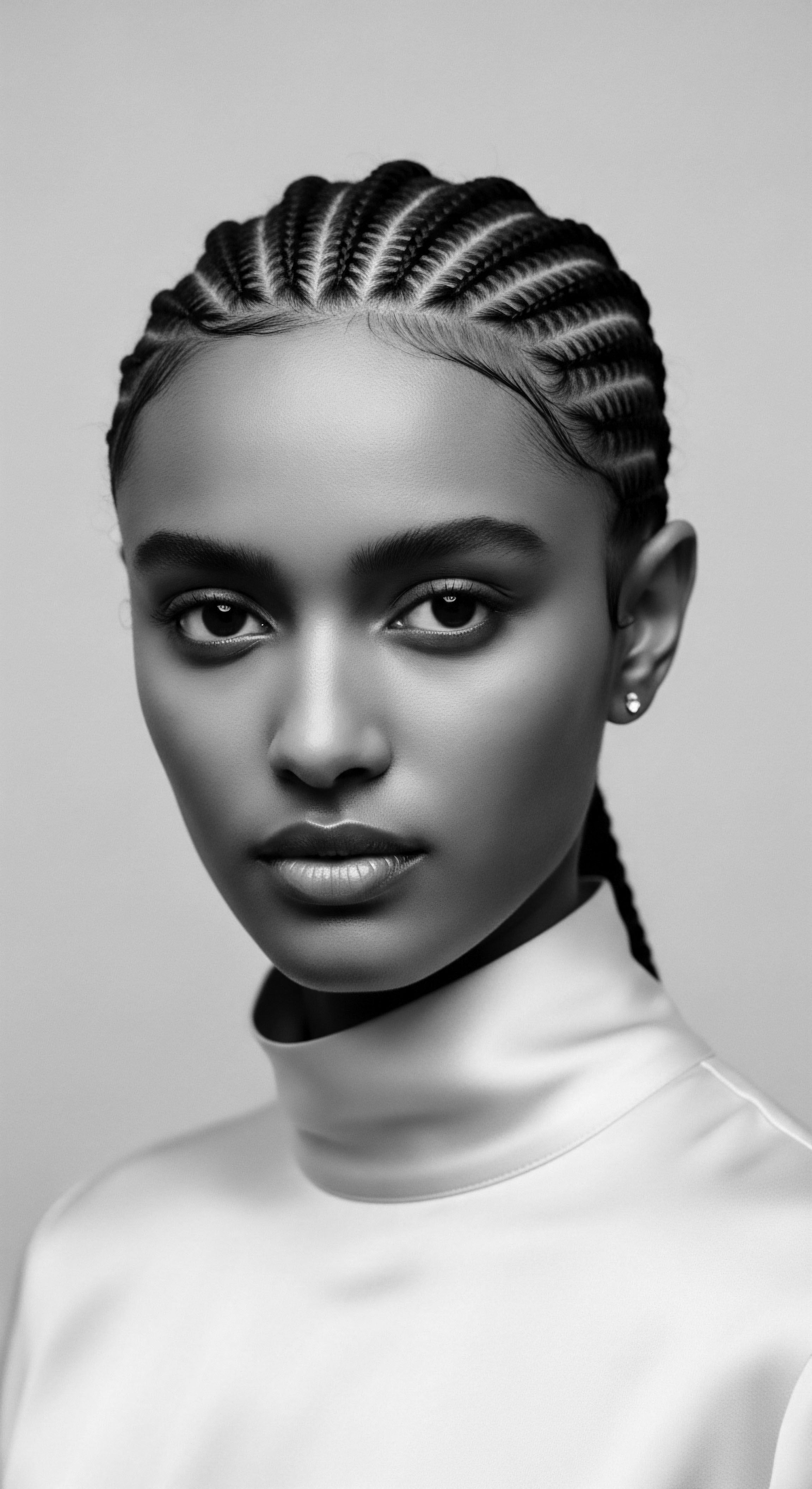
Echoes from Ancient Worlds ❉ Origins and Purpose
The genesis of cornrows stretches back millennia, with archaeological evidence tracing their presence to Stone Age paintings in the Tassili Plateau of the Sahara, dating back to at least 3000 BCE. These early depictions, along with hieroglyphs and sculptures in ancient Egypt, reveal cornrows as more than a fleeting fashion. They were integral to cultural identity, often signifying age, religious beliefs, kinship, marital status, wealth, or social rank within various African societies. This ancient heritage establishes cornrows as a language of symbolism, a visual lexicon understood within communities.
The practical application of cornrows in warmer African climates, where they provided a cool, neat, and manageable hairstyle, also speaks to their inherent design. Women, and indeed men, embraced these styles for their functional benefits, which complemented their aesthetic and symbolic roles. The continuation of this heritage meant that the methods of care were often communal rituals, passed down through generations. Such shared moments of hair grooming became conduits for intergenerational bonding and the transmission of cultural values, weaving care into the social fabric.
The historical roots of Cornrow Care reveal it as a practical, symbolic, and communal practice, preserving hair while transmitting cultural identity across generations.
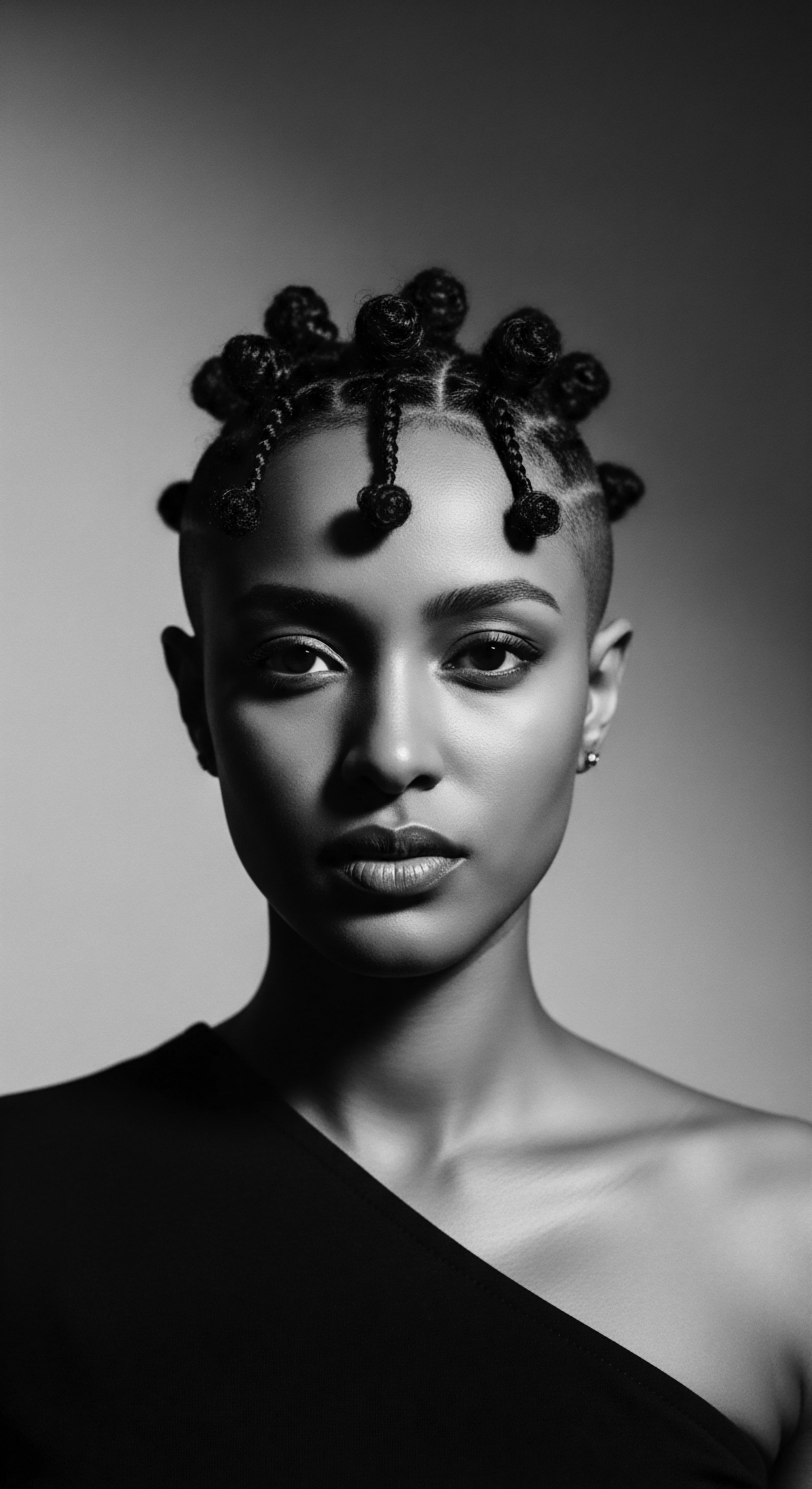
The Tender Thread of Survival ❉ Cornrows Through Adversity
The transatlantic slave trade, a period of immense suffering and forced displacement, brought profound challenges to African hair care traditions. Enslaved Africans were often stripped of their cultural identity, with their heads sometimes shaved as a means of dehumanization. Yet, even amidst such brutal conditions, the spirit of hair care persisted as an act of quiet rebellion and cultural preservation. Cornrows, resilient and adaptable, became clandestine tools of communication and resistance.
A powerful historical instance, vividly documented in Colombia, illustrates this profound connection ❉ Benkos Biohó, a royal captured from the Bissagos Islands, escaped slavery and established a Palenque village. He devised an intelligence network where women, through their cornrow patterns, created secret maps and conveyed messages of escape routes. These intricate designs, appearing innocuous to oppressors, held vital information—a particular number of braids could indicate escape pathways, or seeds and even gold fragments were hidden within the tightly woven strands to aid survival during escape.
This extraordinary example underscores that Cornrow Care, in times of extreme adversity, was not merely about appearance; it was about survival, defiance, and the enduring power of cultural knowledge. The diligence applied to tending these braids was, in essence, tending the flame of hope and freedom.
| Era / Context Ancient Africa |
| Primary Purpose of Cornrows Social status, age, marital status, tribal identity, spiritual connection, practical hair management in warm climates. |
| Era / Context Transatlantic Slave Trade |
| Primary Purpose of Cornrows Covert communication, mapping escape routes, concealing seeds or gold, quiet acts of cultural preservation and resistance, maintaining tidiness for forced appearances. |
| Era / Context The enduring utility of cornrows, from markers of identity to instruments of liberation, reveals their profound historical and cultural significance. |

Foundations of Protective Styling
From a hair wellness perspective, cornrows represent a foundational protective style. Their architecture significantly reduces the need for daily manipulation—combing, brushing, or re-styling—which is a major cause of breakage for textured hair. Afro-textured hair, characterized by its tightly coiled structure and higher porosity, tends to be more fragile and prone to dryness. By keeping the hair secured close to the scalp, cornrows help retain moisture and shield the hair from environmental elements like sun, wind, and heat.
This intermediate apprehension of Cornrow Care therefore acknowledges the strategic application of the style itself as a form of care. It recognizes that maintaining the structural integrity of the braids, alongside nourishing the underlying scalp, directly contributes to length retention and overall hair vitality. The careful installation and diligent upkeep of cornrows are thus integral components of a holistic hair wellness regimen, echoing the ancient wisdom of preserving hair’s intrinsic strength.
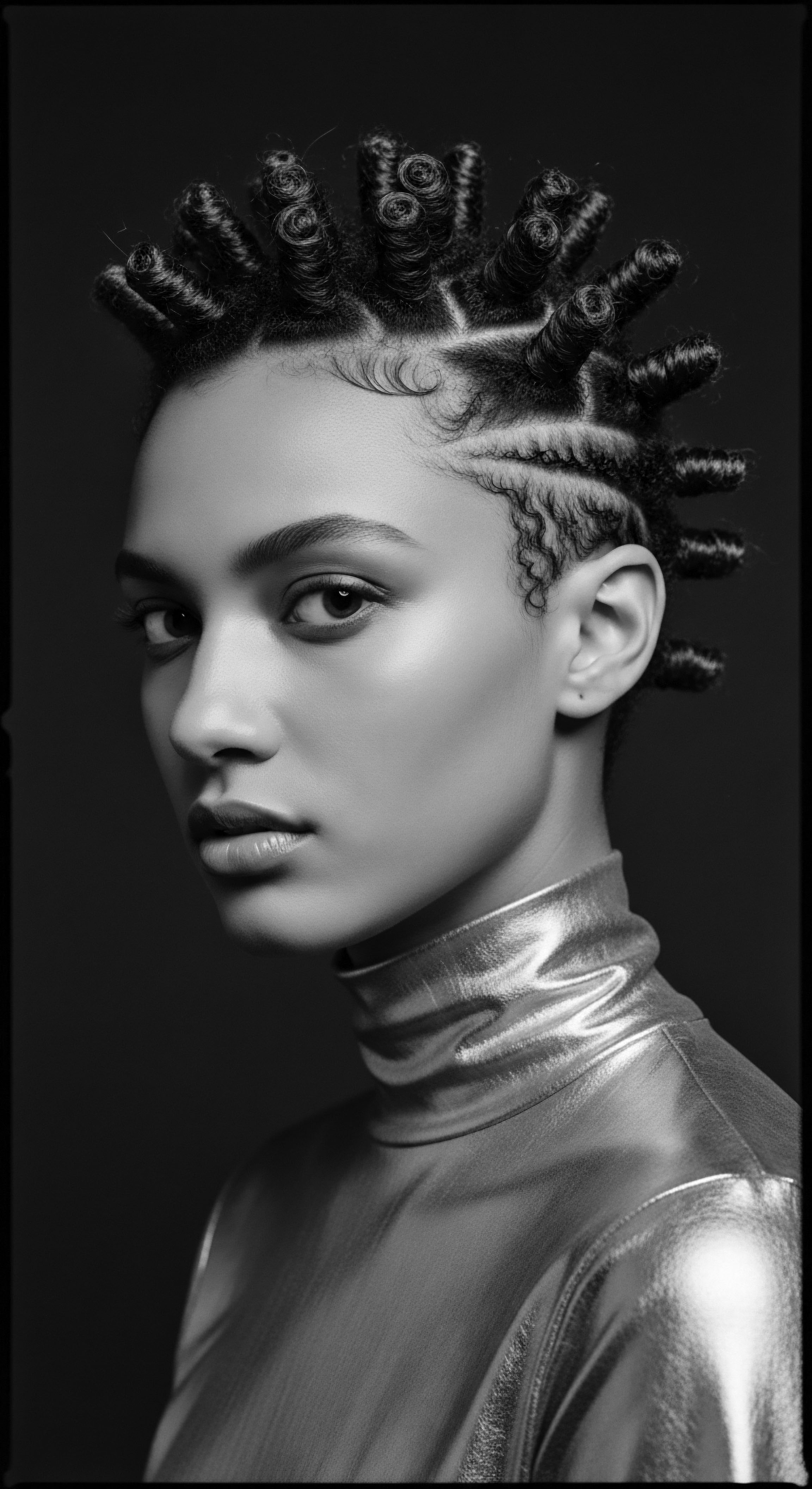
Academic
The academic understanding of Cornrow Care transcends anecdotal observation, presenting it as a complex interplay of elemental biology, ancestral practices, and sociopolitical dynamics. This scholarly inquiry into Cornrow Care demands a comprehensive elucidation of its theoretical underpinnings and practical applications, grounded in empirical observation and historical analysis. It is a profound exploration into a practice that, at its zenith, embodies a sophisticated form of hair management deeply integrated with identity, community, and resistance.

Echoes from the Source ❉ Bio-Physical Modalities and Ancient Ingenuity
Cornrow Care begins with a recognition of the unique biophysical characteristics of textured hair. The tightly spiraled morphology of Afro-textured hair, unlike straighter hair types, permits it to be shaped and sculpted in a myriad of configurations, including the distinctive close-to-scalp plaiting of cornrows. This intrinsic quality of the hair strand itself, often more prone to dryness and breakage due to its coiled structure hindering the distribution of natural oils, makes protective styles such as cornrows not merely aesthetic choices, but fundamental mechanisms of preservation.
The historical origins of cornrows, verifiable through archaeological findings, situate this practice within the profound technological advancements of early African civilizations. Depictions of women with cornrows have been unearthed in Stone Age paintings from the Sahara, dating back to 3000 BCE, indicating its status as one of humanity’s oldest documented braiding styles. These ancient forms, often adorned with gold thread or shells, communicated a person’s societal position, their familial affiliations, and even their spiritual leanings.
The techniques, transmitted orally and through practice across generations, reveal an ancient form of applied cosmetology, where the inherent properties of hair were understood and leveraged for both adornment and protection. The precision required for these intricate patterns, particularly those signifying specific tribal identification, points to a profound level of skill and communal dedication to hair artistry.
The scientific rationale underpinning Cornrow Care, therefore, aligns with these ancient observations. By minimizing external manipulation—reducing the frequency of combing, brushing, and styling—cornrows significantly mitigate the potential for mechanical stress, a primary contributor to hair breakage in highly coiled hair. This reduction in physical friction and environmental exposure fosters an optimal microenvironment for hair growth and length retention, as the hair is shielded within the braid’s structure. The careful application of emollients and humectants to the exposed scalp and braided strands, a practice ingrained in traditional Cornrow Care, supports the scalp microbiome and ensures optimal hydration for the hair shaft, reinforcing its structural integrity.
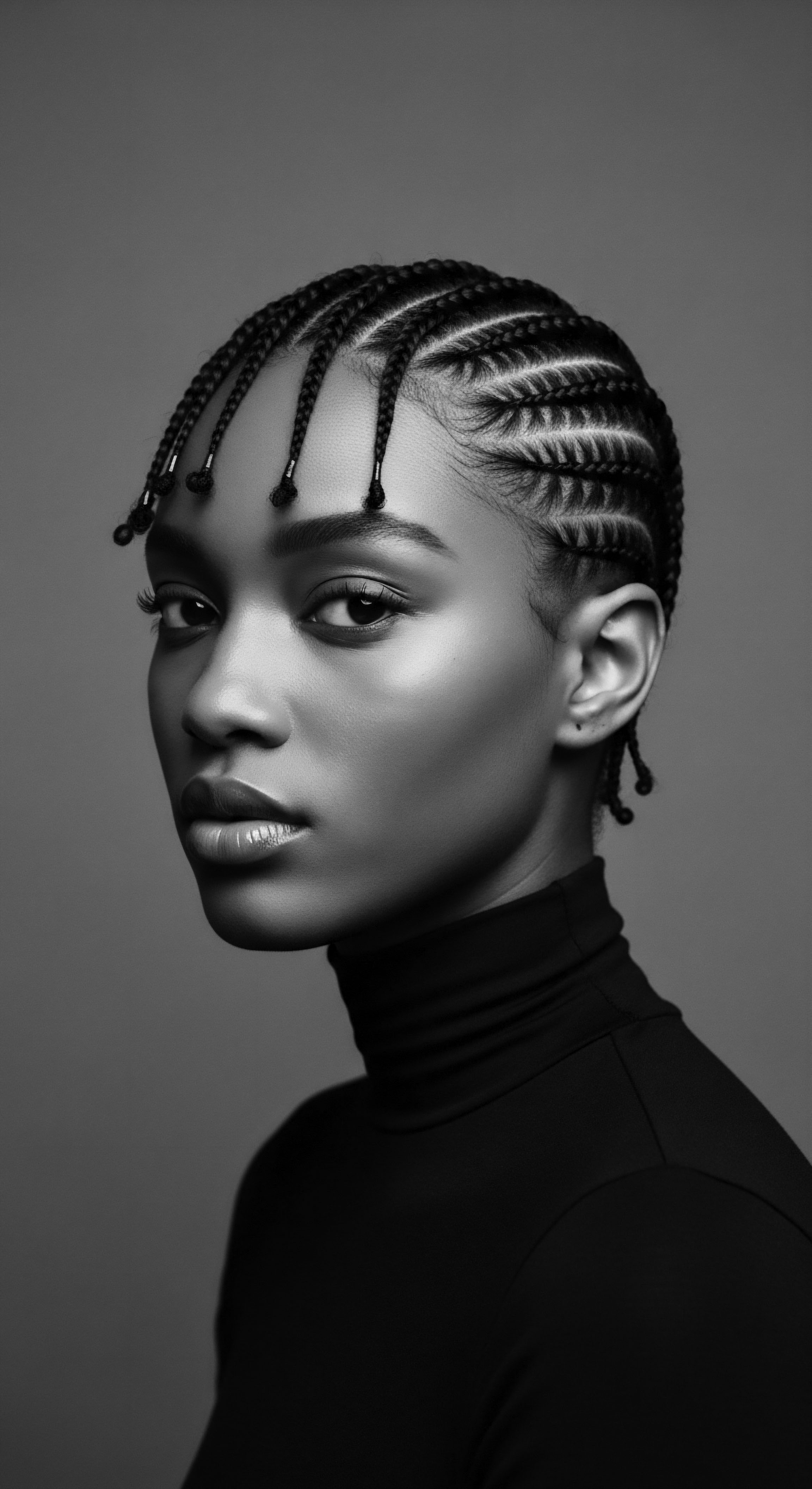
The Tender Thread ❉ Living Traditions and Community Wellness
Cornrow Care, as a living tradition, is deeply intertwined with the social architecture of Black and mixed-race communities. The act of braiding, often a communal endeavor, represents a powerful conduit for intergenerational knowledge transfer and the fostering of kinship bonds. These shared experiences, extending from family gatherings to specialized salons, become spaces where cultural narratives are exchanged, techniques are refined, and a collective appreciation for hair heritage is nurtured. The ritual of hair care, therefore, extends beyond the individual, serving as a pillar of community cohesion and mutual support.
However, the application of Cornrow Care is not without its critical considerations, particularly concerning the delicate balance between protective styling and potential physiological strain. A significant concern in the broader context of protective styles, including cornrows, is the risk of Traction Alopecia. This form of hair loss results from prolonged or repeated tension on hair follicles, often caused by overly tight braiding.
A 2016 study by Johns Hopkins School of Medicine, reviewing nineteen separate studies, concluded a strong association between certain hairstyles, including cornrows, and traction alopecia, alarmingly noting that One-Third of African American Women were affected by this condition. This statistic underscores the imperative for thoughtful and informed Cornrow Care, prioritizing follicular health over extreme tightness for aesthetic longevity.
The communal act of Cornrow Care strengthens intergenerational bonds, yet demands a critical understanding of potential risks like traction alopecia, emphasizing the need for gentle, informed practices.
Responsible Cornrow Care, therefore, requires a meticulous approach to installation, ensuring that tension is evenly distributed and not excessive, particularly around the hairline where follicles are most vulnerable. Practitioners and individuals must be attuned to signs of discomfort, scalp irritation, or thinning edges, which signal undue stress. The duration for which cornrows are worn also plays a crucial role; while they are considered a low-maintenance style that can last for weeks, sustained wear without proper cleansing and moisturizing, or for excessively long periods (typically beyond one month, and certainly not exceeding three months as recommended by some researchers), can compromise scalp health and hair integrity.
The ethical dimension of Cornrow Care also extends to the products employed. Ancestral wisdom frequently relied upon natural ingredients—various oils, plant extracts, and herbal concoctions—to nourish both hair and scalp. Modern Cornrow Care, informed by scientific understanding, often seeks to bridge this gap, selecting formulations that provide deep moisture, antimicrobial benefits, and anti-inflammatory properties, mirroring the intent of traditional ingredients.
- Ingredient Consciousness ❉ A mindful selection of oils and moisturizers that align with ancestral knowledge of natural sustenance for hair and scalp.
- Tension Awareness ❉ The imperative to maintain optimal tension during braiding to prevent undue stress on hair follicles and potential traction alopecia.
- Regular Scalp Cleansing ❉ The application of appropriate cleansing routines within the braided structure to maintain scalp hygiene and reduce buildup.
- Strategic Longevity ❉ Understanding the appropriate duration for wearing cornrows to ensure sustained hair and scalp vitality.
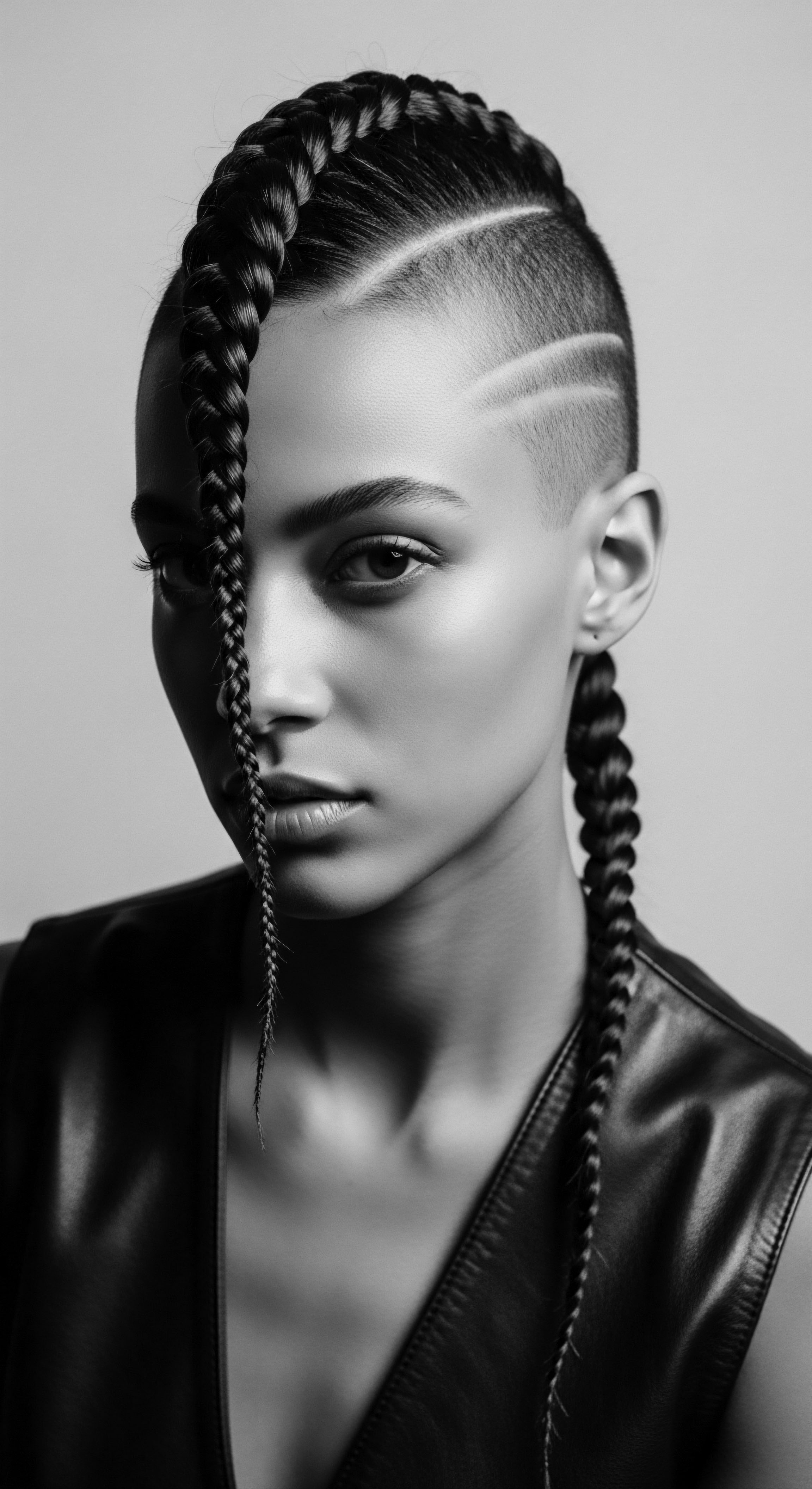
The Unbound Helix ❉ Voicing Identity and Shaping Futures
Cornrow Care, in its fullest academic meaning, is inseparable from its role as a powerful cultural signifier within the African diaspora and beyond. Beyond mere aesthetics or protective function, cornrows have served as a persistent symbol of identity, self-expression, and resistance against prevailing Eurocentric beauty standards. The historical imposition of a “white ideal” in beauty, often linked to colonial ideologies, systematically devalued Black hair and styles. In this context, the deliberate choice to wear and care for cornrows becomes a profound assertion of cultural pride and a rejection of narratives that portray textured hair as undesirable or “unprofessional.”
The mid-20th century, particularly during the Civil Rights and Black Power movements in the United States, witnessed a resurgence of natural Black hairstyles, including cornrows and Afros, as potent emblems of Black identity and empowerment. Icons such as Cicely Tyson and Nina Simone proudly displayed cornrows, thereby solidifying their status as declarations of self-acceptance and unity. This period marked a collective reclaiming of hair as a political statement, challenging discriminatory grooming policies in schools and workplaces that often disproportionately targeted Black individuals.
From a psychological lens, selecting cornrows can signal a strong sense of self-assurance and a deep appreciation for history and cultural lineage. Individuals who choose this style often display a grounded, stable, and confident personality, unafraid to confront challenges and embrace their heritage. The very act of wearing cornrows, given their conspicuous nature, can be seen as a bold statement of connection to ancestral wisdom and narratives that transcend time. The discrimination faced by Black individuals wearing cornrows, even in contemporary society, underscores the persistent sociopolitical weight attributed to this hairstyle, reaffirming its power as a marker of identity that defies assimilationist pressures.
Therefore, the academic delineation of Cornrow Care encompasses a holistic view ❉ it acknowledges the biological properties of hair, respects the ancestral traditions of hair artistry and communal bonding, critically examines the historical and ongoing discrimination against Black hair, and celebrates the enduring psychological and political significance of cornrows as an assertion of identity and resilience. The continuous refinement of Cornrow Care, through both traditional knowledge and scientific understanding, ensures the longevity of this vital cultural practice, enabling future generations to honor their hair’s profound heritage.

Reflection on the Heritage of Cornrow Care
The profound journey through the essence of Cornrow Care reveals a narrative far richer than mere hairstyling. It is, at its heart, a profound meditation on the enduring spirit of textured hair, its ancestral legacy, and the deeply rooted practices that sustain its vibrancy. From the very earliest etchings on ancient Saharan walls to the vibrant expressions seen in diasporic communities today, cornrows have consistently held space for identity, for survival, and for the quiet yet potent declarations of self.
The wisdom embedded in Cornrow Care, whispered across generations and sustained through communal hands, speaks to an intrinsic understanding of hair’s biological needs, even before modern science articulated the mechanisms. It is a testament to the ingenuity of our forebears who, amidst challenge and displacement, transformed a functional art into a clandestine language of freedom, a living map of resistance. This powerful history reminds us that every braid, every meticulously laid row, carries the weight and glory of those who came before.
As we consider the modern landscape of hair wellness, the principles of Cornrow Care continue to illuminate a path towards holistic well-being for textured hair. It compels us to seek harmony between cultural reverence and scientific insight, advocating for practices that nourish not only the physical strands but also the spirit connected to them. This enduring tradition, constantly adapting while holding firm to its roots, shapes not only individual identities but also the broader tapestry of cultural expression, asserting the beauty and resilience of Black and mixed-race hair for all time.
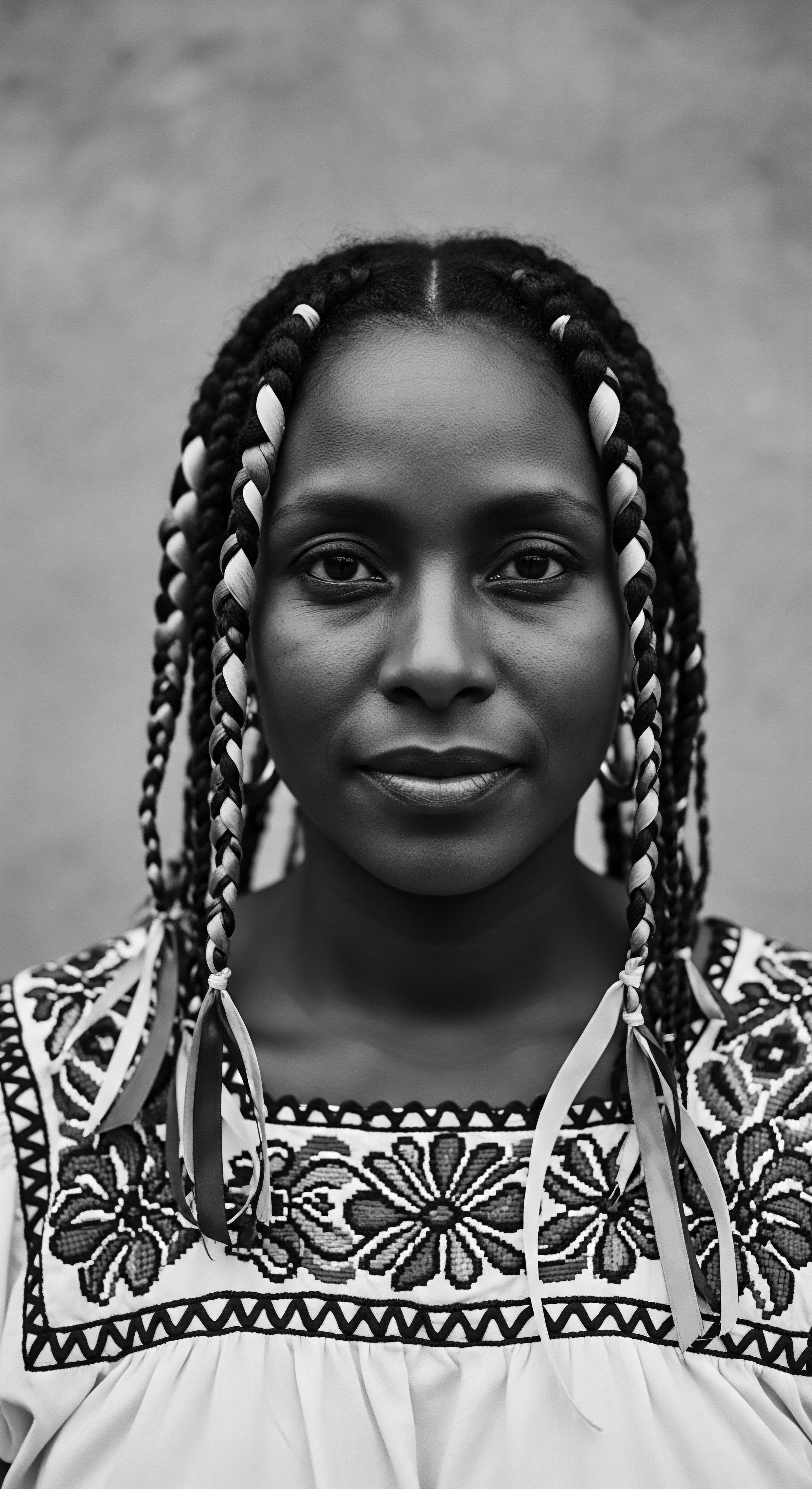
References
- Byrd, A. & Tharps, L. (2001). Hair Story ❉ Untangling the Roots of Black Hair in America. St. Martin’s Press.
- Dabiri, E. (2020). Twisted ❉ The Tangled History of Black Hair Culture. HarperOne.
- Dove, A. & Powers, L. (2018). Hair Story ❉ The Untangling of Roots in Black Hair in America. New York University Press.
- Jacobs, L. (2009). From the Kitchen to the Parlor ❉ Language and Becoming in African American Women’s Hair Care. Oxford University Press.
- Johnson, K. & Bankhead, T. (2014). Black Hair ❉ A Guide to Braiding, Styling, and Hair Care. Milady Publishing.
- Peters, K. (2018). Black Hair ❉ Art, Style, and Culture. Black Dog & Leventhal Publishers.
- Thornton, J. (1998). Africa and Africans in the Making of the Atlantic World, 1400-1800. Cambridge University Press.
- Weitz, R. (2004). Rapunzel’s Daughters ❉ What Women’s Hair Tells Us about Women’s Lives. Farrar, Straus and Giroux.
- White, T. M. & White, J. (2010). African American Hairstyles ❉ A Cultural and Historical Look. Infobase Publishing.
